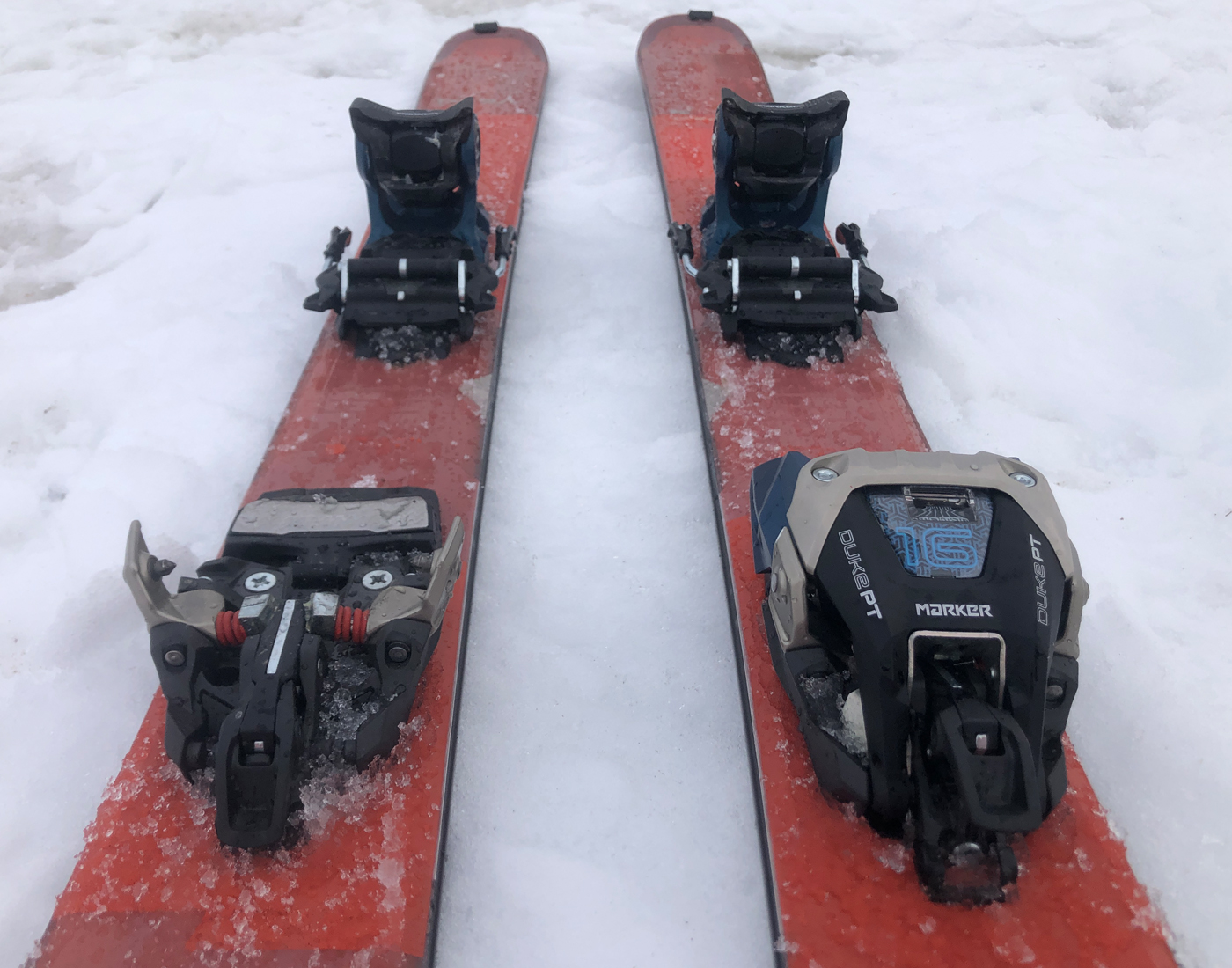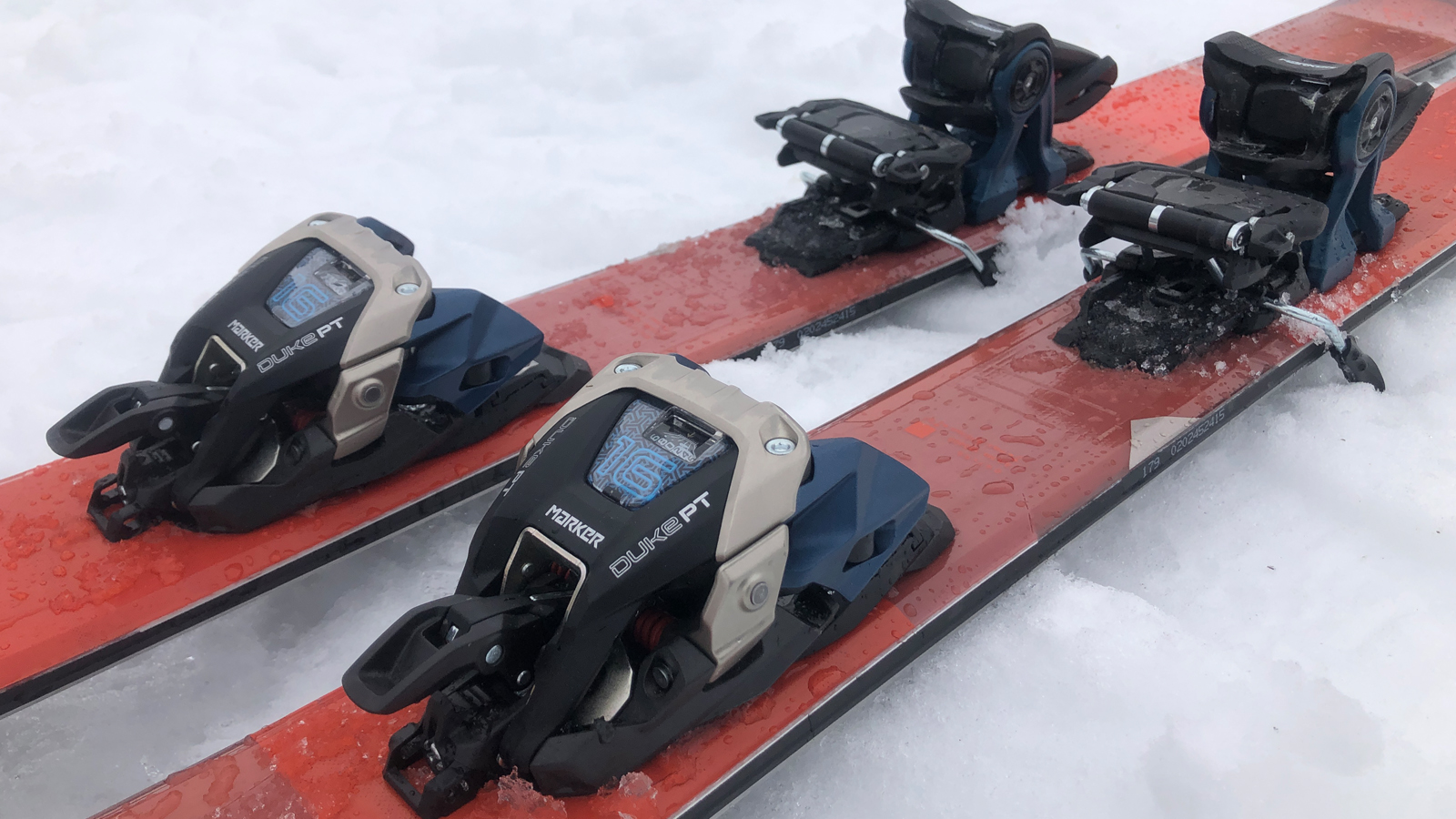Marker knows you want a lightweight uphill experience and confidence for freeriding on the downhill. That’s why the Duke PT binding exists.
To start, here’s a little background: I’m a ski racer turned park skier turned backcountry skier. In other words, over my years on snow, I’ve gone from skiing the stablest, heaviest bindings on Earth to the most nimble and lightweight.
Throughout this evolution, I’ve found myself in a binding pickle. These days, I’m usually skiing on mega-light tech bindings and, sure, the uphill weight savings are great. But, when the time comes to go downhill—what’s supposed to be the most fun part—I’m sacrificing a lot. I want to lean into turns like a racer, jump off whatever’s in front of me like a park rat and plow through variable snow conditions like a backcountry ripper. Yet, I can’t confidently do any of those things with lightweight tech bindings.
I learned to accept my binding sacrifices, but my skiing had to adapt. The first time I used Marker’s new Duke PT 16, in March 2020, those sacrifices vanished into the springtime air and, once again, I felt confident giving it everything I had on the downhill.
Allow me to explain…
When the team at Marker developed the Duke PT, it started with a classic heel-piece that even recreational skiers can recognize as reliable. Notably, the heel-piece stays firmly in place, 24/7. The toe-piece also looks fairly traditional; at first glance, the binding appears familiar, a pretty normal alpine setup. But, it’s not. Like unlatching a secret door, you can flip the toe-piece forward to reveal bomber tech pins for touring. This is where the magic begins.

For your uphill journey, you can leave the toe-piece flipped forward and simply clip into the tech pins. But, the true beauty of the Duke PT is this: You can swiftly remove the toe-pieces and throw them in your pack—taking 600 total grams off your skis for an uphill experience that’s a tad bulkier than a traditional tech binding but with all the functionality. Remember in the movie Transformers when Bumblebee changes from a big, badass robot to a sleek little sports car in, like, three seconds? The Duke PT is the Bumblebee—the Transformer—of ski bindings.
Once at the summit, just pull the toe-pieces out of your pack, clip them back onto the ski and—voilà!—you have a true alpine binding for the descent. The feeling of unclipping/clipping the bindings is natural and easy-to-use, and you’ll notice when the toe-piece is locked in place with four, robust clips that make audible “clicks” when the toe-piece is locked in place.
For the first time in years, I toured up a mountain and skied back down with complete confidence, no sacrifices to my skiing style. My inner racer arced turns with strong power transmission. My inner park skier jumped off knolls without worries, knowing the DIN was set at 12, with an ability to go up to 16. And my inner backcountry skier plowed through spring crud with a sense of comfort my old tech binding simply couldn’t offer.

So what’s the catch? There is none, really. Sure, the binding is a little heavier than most super-tech bindings, weighing in at 1350 grams per foot (1050 with the toe-piece removed). But as someone who spends 90% of his time ski touring, I can confidently say the ascent, even with this slightly additional weight, is really comfortable. In future iterations of the Duke PT, I’d also hope to see an improvement with the heel riser and its accessibility while touring; I found it a little tricky to move the riser up and down with my pole, requiring me to lean down to make this adjustment. But my pole-to-heel-riser skills with this binding will surely improve over time, and I’d rather have the riser be sturdy than flimsy and falling out of place.
Here’s the bottom line: When I got this binding, I immediately gave away my old tech setup. No joke. The Duke PT completely reoriented my perspective of ski-touring because, now, when I’m sweating uphill, I know the downhill will be even more worth it than ever. No sacrifices. No pickles. Just wicked fun, full-gas skiing.
(Note: The Marker Duke PT binding is compatible with all boot sole types falling under the Alpine ISO 5355, Touring ISO 9523 or GripWalk ISO 9523 norms. You will need tech inserts in your boots to use the pins.)



